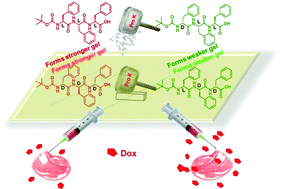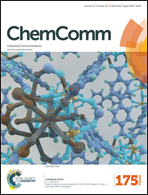Peptide based hydrogels for cancer drug release: modulation of stiffness, drug release and proteolytic stability of hydrogels by incorporating d-amino acid residue(s)†
Abstract
Synthetic tripeptide based noncytotoxic hydrogelators have been discovered for releasing an anticancer drug at physiological pH and temparature. Interestingly, gel stiffness, drug release capacity and proteolytic stability of these hydrogels have been successfully modulated by incorporating D-amino acid residues, indicating their potential use for drug delivery in the future.



 Please wait while we load your content...
Please wait while we load your content...